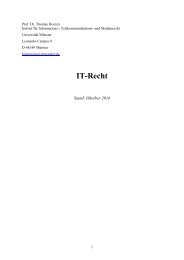3d4yVkKMl
3d4yVkKMl
3d4yVkKMl
You also want an ePaper? Increase the reach of your titles
YUMPU automatically turns print PDFs into web optimized ePapers that Google loves.
- 65 -<br />
sample sizes for fin and humpback whales are too small to provide the information that is necessary<br />
to pursue the JARPA II research objectives based on Japan’s own calculations, and the<br />
programme’s design appears to prevent random sampling of fin whales. Thirdly, the process used<br />
to determine the sample size for minke whales lacks transparency, as the experts called by each of<br />
the Parties agreed. In particular, the Court notes the absence of complete explanations in the<br />
JARPA II Research Plan for the underlying decisions that led to setting the sample size at<br />
850 minke whales (plus or minus 10 per cent) each year. Fourthly, some evidence suggests that the<br />
programme could have been adjusted to achieve a far smaller sample size, and Japan does not<br />
explain why this was not done. The evidence before the Court further suggests that little attention<br />
was given to the possibility of using non-lethal research methods more extensively to achieve the<br />
JARPA II objectives and that funding considerations, rather than strictly scientific criteria, played a<br />
role in the programme’s design.<br />
226. These problems with the design of JARPA II must also be considered in light of its<br />
implementation. First, no humpback whales have been taken, and Japan cites non-scientific<br />
reasons for this. Secondly, the take of fin whales is only a small fraction of the number that the<br />
JARPA II Research Plan prescribes. Thirdly, the actual take of minke whales has also been far<br />
lower than the annual target sample size in all but one season. Despite these gaps between the<br />
Research Plan and the programme’s implementation, Japan has maintained its reliance on the<br />
JARPA II research objectives — most notably, ecosystem research and the goal of constructing a<br />
model of multi-species competition — to justify both the use and extent of lethal sampling<br />
prescribed by the JARPA II Research Plan for all three species. Neither JARPA II’s objectives nor<br />
its methods have been revised or adapted to take account of the actual number of whales taken.<br />
Nor has Japan explained how those research objectives remain viable given the decision to use<br />
six-year and 12-year research periods for different species, coupled with the apparent decision to<br />
abandon the lethal sampling of humpback whales entirely and to take very few fin whales. Other<br />
aspects of JARPA II also cast doubt on its characterization as a programme for purposes of<br />
scientific research, such as its open-ended time frame, its limited scientific output to date, and the<br />
absence of significant co-operation between JARPA II and other related research projects.<br />
227. Taken as a whole, the Court considers that JARPA II involves activities that can<br />
broadly be characterized as scientific research (see paragraph 127 above), but that the evidence<br />
does not establish that the programme’s design and implementation are reasonable in relation to<br />
achieving its stated objectives. The Court concludes that the special permits granted by Japan for<br />
the killing, taking and treating of whales in connection with JARPA II are not “for purposes of<br />
scientific research” pursuant to Article VIII, paragraph 1, of the Convention.



